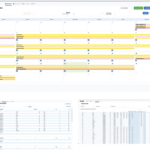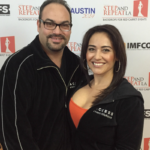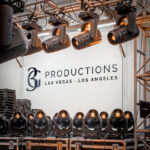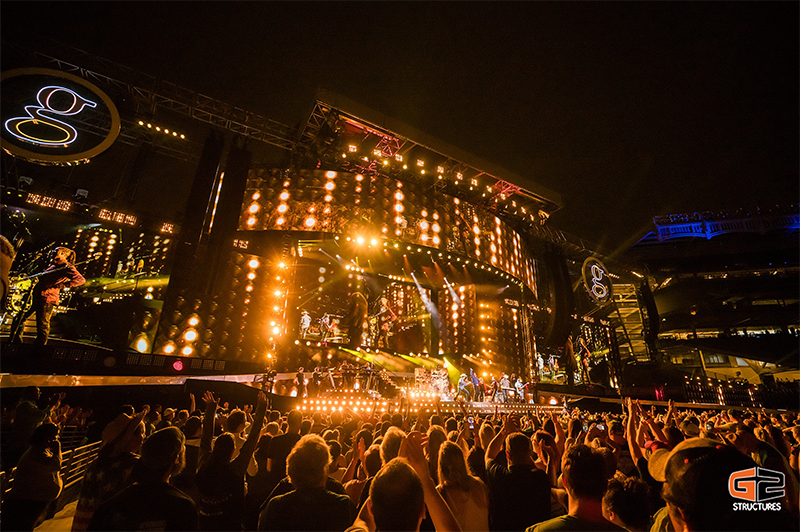
A Multi-Year Push toward Stadium-Sized Solutions
Almost all human progress begins with someone at one point pausing to scratch the proverbial head and think, “There has to be a better way.” For many years, getting big stages into stadiums took a lot of labor, time and expensive cranes, which led G2 Structure’s Jim Brammer to think of a more efficient alternative.
In 2013, Justin Timberlake and Jay-Z were doing a huge summer tour that sucked up all the large format stages in the country. “They did a lot of stadium shows, and on 15 of them, they used Stageco, Brown United or Mountain stages.” Brammer says. “When they went to do number 16, they had run out.” G2 offered up an alternative, but Tom Bates, Boston-based Live Nation promoter rep, was skeptical. “He grilled me on it,” Brammer says, with a laugh. “He was asking about the weight, asking if it could do this and that, and I kept saying ‘Yes.’” When they were awarded the gig, G2’s senior crew chief, Chris Griffin, told Brammer he would go to Boston for the show and “ordered” Brammer to stay home and sit by the phone. Which Brammer did, nervously. The second day, in the afternoon, the phone did ring: It was Bates. The conversation went a little something like this:
Bates: “Chris is in my office, and he tells me he’s finished — it’s built.”
Brammer: “That sounds about right to me.”
Bates: “This usually takes 3-1/2 days. He’s saying he’s done, and it’s only taken two.”
Brammer: “Well, have you been outside? What does it look like?”
It looked like success, as Bates started telling everyone this new staging system was the best thing since sliced bread. This and other innovations coming from G2 would have a lasting impact on the industry. “One of the reasons that make G2 a success is, the team really considers every aspect of a concert or event,” son Michael Brammer says. “Our largest stage can hold more weight than a standard aluminum or steel stage. Few can offer full weather protection, but that’s what we do.”
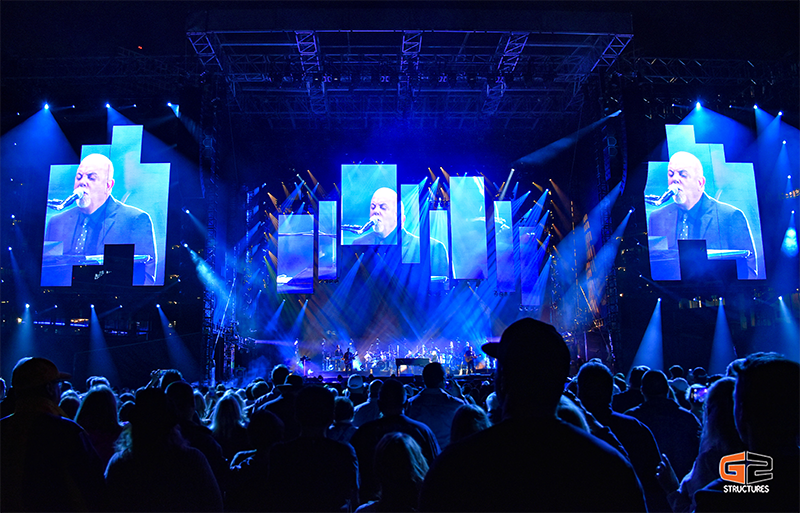
History, and that Last Play at Shea
Founded in 2006, today Michael’s father and Special Event Services (SES) founder Jim, plus Greg Hareld and Nevin Kleege, run G2. Clients include Billy Joel, Paul McCartney, Luke Bryan, Jason Aldean, Dead and Company, Phish, Kings of Leon and Florida Georgia Line, among others. Other gigs that have kept them busy include CMA Music Fest, Made in America Festival, Major-League All-Star Games and several other festivals around the country. The history of parent company SES began typically enough — in Jim Brammer’s garage in 1986, working alongside his wife, Lynn. “By 1989, we were firmly entrenched in the Southeastern corporate theater market and doing several festivals,” Jim says. In 1994, they started working with Rev. Billy Graham on his events, working with Dr. Graham until he retired in 2005. The company would beget 10 subsidiaries, including G2 Structures.
G2 started when Jim Brammer reached out to John Brown of Brown United to form a partnership that would better facilitate large stages. They had worked often together on the Graham Crusades and some concerts in stadiums, and in the course of that, Brammer became a “self-taught structural engineer” who wanted to take these stages “to the next level.” In 2006, with Brown plus partners Mike Drew and Linn Vogt, they set out to build a “Second Generation” of stages. Once they had it drawn up, they reached out to the folks at the CMA Music Festival and pitched the idea of one huge stage instead of two side by side stages. They were interested — and when Kenny Chesney’s production manager Ed Wannebo got wind of it, he got interested too. “Ed wanted two for Kenny so they could leapfrog on their tour.”
The next year, Brammer and the G2 team were called in for Billy Joel’s historic “Last Play at Shea” shows. “I was there for all the guest artists who came, including Garth Brooks, Roger Daltrey and Paul McCartney,” Jim says. The latter didn’t plan on making it, but a dramatic change in flight to Canada and a police escort got him on the stage with Joel for the second encore. “Billy then turned to Paul and told him to close the show, which he did, with ‘Let It Be.’ It was unbelievably magical.”
Yet it was a lot of work. Citi Field, the new home stadium for the New York Mets, was being built right next door, and that made getting in and out difficult. Plus, the stage required an expensive four-crane call. Similar situations got Jim thinking that, once again, “there must be a better way.” He says he knew that if he stayed with the steel structures and continued doing stages the traditional way, he’d just be competing with the other large-format staging companies with no advantage. At this point, he and Brown parted amicably, and Jim started to work on creating a large format structure that was lighter, stronger and could be built quicker. What they came up with would be called the K2. “If I was ever going to have the K2 be fully realized, I needed a super crew.” This crew included Kleege, Hareld and Griffin. “I had already worked with Chris [Griffin] for ten years, and I really wanted him on this project,” he says. “I’d known Nevin for a long time, and knew I needed him — and Greg is an executional genius.”
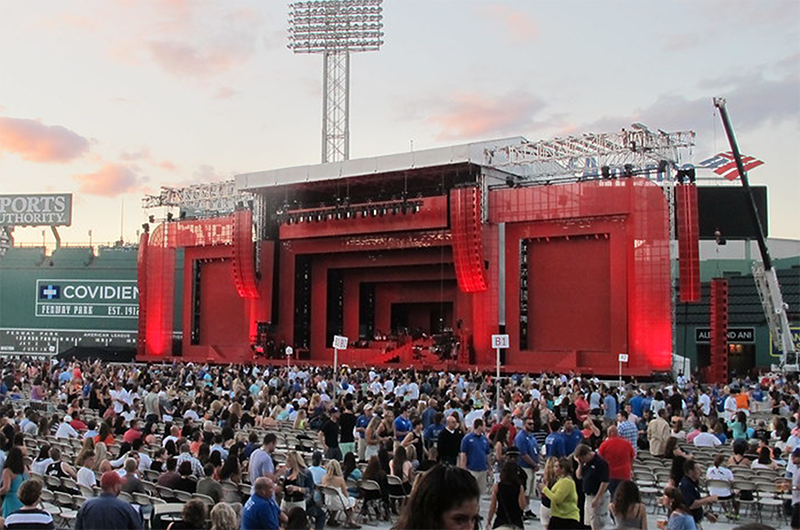
Then came that Timberlake/Jay-Z show, and word had gotten out about the K2. Bobby “Boomer” Thrasher, Joel’s production manager, called Jim and said he wanted to see the blueprints. “After looking over the prints, he asked if we could make some changes,” Jim says, crediting Thrasher as being instrumental in the new stage’s success because of his suggested improvements. Now called the K2i — “i” for “improved” — Thrasher asked for two, “and the rest is history.”
History indeed. At one of the early Joel gigs, Brammer received word that Thrasher had stopped halfway through setting it up because he had the idea to pre-rig the whole show. Not all were happy, as it gave a lot less to do to the 40 riggers that were supposed to come in the next day. Now instead of cranes taking up space, all the gear could be carried on the field. The difference in time allowed for significant savings, too: A stage like this in a stadium could cost in excess of a million. But if you shared it twice across two different music events — say, Billy Joel on Friday, Maroon 5 on Sunday — now it’s only $500,000. Book Kenny Chesney on Tuesday, and now it’s only $330,000 per production.
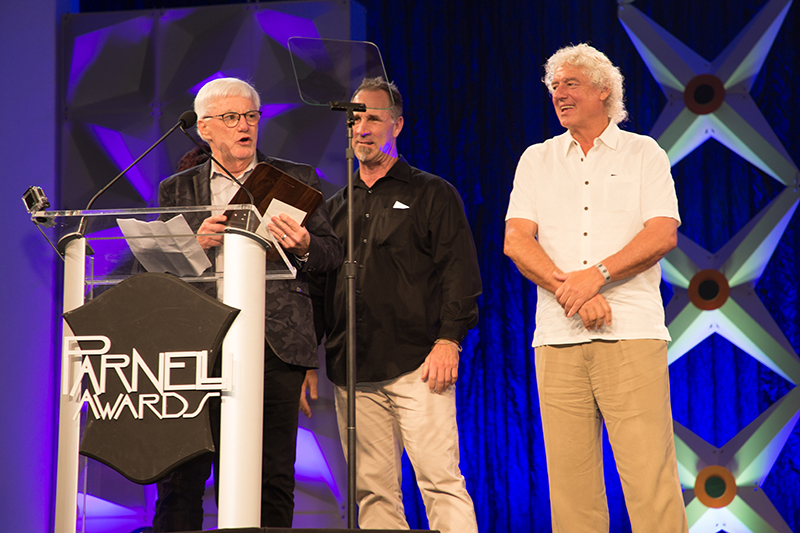
Bringing it All Home
In 2015, G2 brought the building of their stages home. “We had had a few minor problems [with subcontractors], small things we were able to catch and fix before anything was delivered, but we just realized the only way to really control the quality and the end product is to build it here in North Carolina.” With their location in close proximity to NASCAR race teams, “we hired race car builders and they were off work at their shops at 4, had dinner, then came to work as welders and fabricators at our shop until 10,” Brammer notes.
In 2016, a Garth Brook’s Yankee Stadium show needed a framework for a quarter of a million pounds of gear raised by more than 200 hoists. “That’s the big advantage of K2i — the pre-rigging really helped that load-in go smoothly, especially with all the LED headers and complicated set pieces the show required.” Later that year, Mark “Springo” Spring called. Paul McCartney was going out with his biggest show yet, and once again the G2 team tweaked their stage to handle the tour. “We called that one the K2iHD — ‘Heavy Duty Springo Truss,’” Brammer says, with a laugh.
Last year, everyone involved with G2/SES and the industry as whole suffered the heart-breaking loss of Griffin, who did not survive a fall while working on a Coachella stage. “Losing Chris was the hardest hit ever,” Brammer says. “I could visualize it and say it, but Chris could build it.”
Fans of G2 and everyone connected to the parent company SES will be glad to hear that they are holding steady through this current crisis. They are prepared to weather it through not only the rest of the year but into next — all without furloughing anyone, just cutting some hours and keeping steady by taking outside fabricating work. “There may be some ‘breadcrumbs’ this winter, but we have a plan that takes us to April. Then you’ll see some activity. Until then, our motto is ‘Faith over fear.’”
For more information, visit www.g2structures.com.
